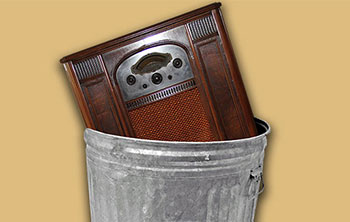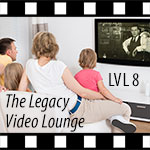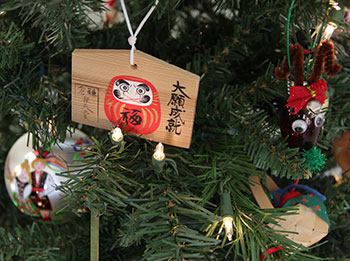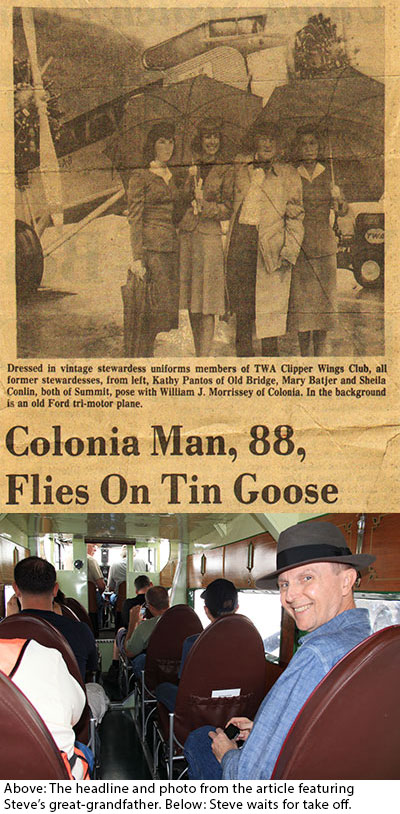 Crash! “Now it’s garbage!”
Crash! “Now it’s garbage!”
Remember that scene in the “Odd Couple” movie, the one where Oscar smashes Felix’s plate of pasta against the kitchen wall? (Okay, the film WAS released in 1967, so you younger folks may need to Google it. Look for the spaghetti scene.)
Well, the same kind of thing is happening now with the possessions of our parents and grandparents. What do I mean?
Family keepsakes – and stories – are at risk.
I treasure my grandparents’ Atwater Kent radio and my great-grandfather’s meerschaum pipe. But I’m not sure who in my family will want these physical links to our past once I’ve shuffled off this mortal coil. And, as pointed out in two recent articles by Richard Eisenberg (Sorry, Nobody Wants Your Parents’ Stuff & What You Said About ‘Nobody Wants Your Parents’ Stuff’) this is a challenge facing many families today. With Baby Boomers downsizing and younger generations shunning lots of possessions, the things that used to be family keepsakes are being donated to Goodwill, placed in consignment shops, sold to antique stores, or just tossed in the garbage. That’s troubling, but there’s an even bigger issue here.
Losing connections to our family history.
What concerns me as a professional personal historian and video biographer is the continuing loss of something even more valuable than mementos and keepsakes: family stories. That’s because so many of the items being sent to landfills today have great family stories and associations attached to them. For instance, I treasure with my grandfather’s pocket watch. It’ll never cause an “Antiques Roadshow” appraiser’s eyes to light up with excitement, but every day when I see the old silver timepiece hanging in its display stand, I’m reminded of a man who I still love deeply, decades after his passing. It’s amazing how a simple item like this serves as a powerful touchstone to feelings and memories.
But I get it: Some families just have too many items that nobody wants to display or store. So how can you let go of this stuff without trashing your family history?
Leave the gun. Take the cannoli.
My apologies to “The Godfather” for this analogy. But before tossing your parents’ keepsakes (the gun), save the stories and memories associated with them (the cannoli). How can you do this? Here are a few ideas:
• Video Inventory. Break out your video camera (or hire a professional) and gather your family and the possessions you’re planning to “eighty-six.” Shoot each item, describe what it is and share the memories and stories it evokes. With a little editing, the result will be a cool visual record to pass along to future generations.
• Slide Show. A variation on the video inventory theme. Shoot stills of each item and record your remembrances on audio, using a digital MP3 recorder. Combine the two to create a slide show video.
• Illustrated Photo Book. Transcribe the audio recording mentioned above. Produce a book featuring the photos and the transcribed text. The final product can range from simple (loose leaf pages in a binder) to elaborate (hard cover book with glossy pages) – it’ll all depend on your budget, wants, and needs.
Make sure your family stories survive.
You may not treasure the possessions your parents and grandparents accumulated, but don’t forget that the memories associated with these items speak directly to your family’s identity and values. Your grandkids and great-grandkids may one day feel disappointed that you consigned all this family stuff to a dumpster. But they will be grateful that you made sure the stories connected to these items survived.


 Our collection of ornaments (like most, I suspect) is pretty eclectic. They range from childhood craft projects, like a faded glass ball featuring my name in glue and sparkles, to handmade and store-bought decorations acquired throughout our lives. Halina and I add one new ornament each year, usually one we find on vacation, like the wooden carving we bought years ago in a temple in Japan.
Our collection of ornaments (like most, I suspect) is pretty eclectic. They range from childhood craft projects, like a faded glass ball featuring my name in glue and sparkles, to handmade and store-bought decorations acquired throughout our lives. Halina and I add one new ornament each year, usually one we find on vacation, like the wooden carving we bought years ago in a temple in Japan.